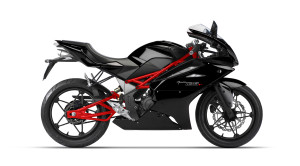 Are you interested in buying a used motorcycle? Maybe you are looking to replace your old bike or to buy an additional one—or perhaps you have never owned one and are hoping to jump on a hog. In any case, shopping for a new motorcycle can be a pain, just like shopping for any new motor vehicle. Below are some valuable tips to consider as you shop around:
Are you interested in buying a used motorcycle? Maybe you are looking to replace your old bike or to buy an additional one—or perhaps you have never owned one and are hoping to jump on a hog. In any case, shopping for a new motorcycle can be a pain, just like shopping for any new motor vehicle. Below are some valuable tips to consider as you shop around:
Be Honest With Yourself
First and foremost, you must decide what kind of riding you will be doing. Ask yourself the question: why am I buying this motorcycle? Determine whether the bulk of your riding will be for commuting, touring, competing, etc. This is important information because it will allow you to know what type of engine to look for.
Do Your Homework
Once you have identified why you are buying a bike, you can more specifically target the make and model that interests you. As you do this, be sure to be thorough in your search. A big part of thoroughness includes price comparison. You can find the market values for motorcycles at Nadaguides.
Ensure Security Before You Purchase
Buy from a reputable dealership, if you can. If you choose to purchase from a private seller, set aside time to search. You can compare used prices as such websites as Craigslist, KSL, CycleTrader, or EBayMotors.
Take Your Time and Ask Questions
Regardless of who you buy your bike from, prepare a long list of questions to ask the seller. The following are some of the questions that AllState Insurance recommends that you ask:
- Did you buy the bike new?
- Are you financing the bike, or do you own it? Do you have the title? (Note: it’s more complicated to purchase a bike used when the owner doesn’t have the title.)
- Have you ever dropped your bike or been in an accident with the bike?
- What kind of maintenance schedule have you followed? Do you have any maintenance records you can share with me?
- Who performs your bike maintenance?
- Where do you store the bike? Do you winterize it?
- Why are you selling the bike?
- How often have you used the bike, and what type of riding do you do?
Whenever possible, you should also ask for a service history.
Inspect and Test Drive
When you find something that you are interested in buying, be sure to inspect it first. Either take the bike to a reputable shop to have it inspected, or thoroughly inspect the bike yourself. Visit the Motorcycle Safety Foundation for a helpful tips on how to properly inspect a bike on your own. Inspect the tires, the engine, the brakes, the seat, gas tank, etc. Be as nit-picky as you wish! It’s worth the effort.
Once the bike has passed inspection to your satisfaction, take it for a test drive. Just because it looks nice from the outside does not mean that it runs properly or without flaws. Test the accelerator, the brakes, and the steering. While you should check for unusual noises that you may hear from the motor, you should also be aware that bikes (like all motor vehicles) can make unusual noises without actually having a true problem. If you are unsure, always inquire about noises or potential problems. It can’t hurt to ask and make sure. Once you have finished your test drive, inspect the bike one more time, looking for drips or drainage.
Be Prepared to Walk Away Empty-Handed
Smart motor vehicle buyers do not allow themselves to be convinced into something they do not want. Make your decision confidently. Even after you have asked all the important questions, be prepared to walk away from the deal if it is not satisfying. Follow your gut feeling, because there is no need to rush as you make your decision. You might regret it later if you don’t.
